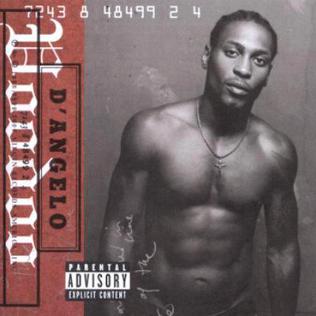
D’Angelo – Voodoo
D’Angelo’s Voodoo: When Neo-Soul Goes Neo-Nap Time
Let me start with a confession that might get me excommunicated from the Church of Music Criticism: I’m not entirely sold on D’Angelo’s supposedly revolutionary “Voodoo.” Yes, I know – this is like admitting you think the Mona Lisa is “just okay” or that Shakespeare could’ve used an editor. But hear me out.
Released in 2000, “Voodoo” is widely hailed as neo-soul’s holy grail, but listening to it feels like being invited to a party where everyone’s moving in slow motion and the host keeps insisting “it’ll pick up soon.” Spoiler alert: it rarely does.
The album’s production, helmed by D’Angelo and Questlove, is undeniably impressive on a technical level. The layered instrumentation creates a thick, humid atmosphere that’s about as close as audio can get to actually being in New Orleans during August. But like that Louisiana humidity, it can sometimes feel suffocating, with songs that meander so much they could file for citizenship in three different countries.
Take “The Line” – it’s like watching someone try to parallel park for seven minutes. Sure, they’ll get there eventually, but did we need to witness the entire process? The track showcases D’Angelo’s masterful understanding of groove and space, but sometimes space needs to be filled with, you know, something.
However – and this is where I’ll probably save myself from complete professional exile – when “Voodoo” hits, it hits like a ton of particularly funky bricks. “Devil’s Pie” is an undeniable masterpiece, a scathing critique of materialism wrapped in a bass line so thick you could spread it on toast. “Send It On” demonstrates D’Angelo’s ability to channel the spirits of soul giants past while creating something entirely his own.
The much-celebrated “Untitled (How Does It Feel)” deserves its flowers, even if those flowers are being thrown very, very slowly. It’s a master class in tension and release, though I can’t help but feel that some of its reputation rides on that infamous music video. (Not that I’m complaining about that particular piece of cultural history.)
What frustrates me most about “Voodoo” is that its flaws and virtues spring from the same well. The loose, improvisational feel that makes tracks like “Spanish Joint” so intoxicating is the same quality that makes “The Root” feel like it’s being performed underwater in zero gravity. The intentionally murky mix that gives “Left & Right” its distinctive character makes other tracks sound like they were recorded through a wall.
D’Angelo’s vocals, while technically impressive, often feel like they’re playing hide and seek with coherence. Yes, I understand that the mumbled, buried-in-the-mix approach is intentional, but so is modern art, and I don’t have to pretend to enjoy that either.
To be fair, the album’s influence is undeniable. You can hear echoes of “Voodoo” in everything from Frank Ocean to Anderson .Paak. But being influential doesn’t automatically make something enjoyable – just ask anyone who’s had to read James Joyce’s “Ulysses.”
Rating: 6.5/10
High Points:
- “Devil’s Pie” (A genuine masterpiece)
- The innovative production techniques
- Those moments when the funk really hits
- “Untitled (How Does It Feel)” (Both song and video)
Low Points:
- Pacing that makes continental drift look speedy
- Occasionally too-murky mix
- Lyrics that play harder to get than a cat at a dog park
- The sense that some songs could’ve ended three minutes earlier
Final Verdict: “Voodoo” is like that friend who’s absolutely brilliant but also exhausting – you respect their genius, but you don’t necessarily want to hang out with them every day. While it’s undoubtedly an important album that pushed the boundaries of what R&B could be, it sometimes feels like it’s pushing those boundaries right into a musical quicksand of its own making.
For fans of: Watching paint dry (but in a really sophisticated way), trying to read books in dark rooms, and pretending to understand wine terminology.